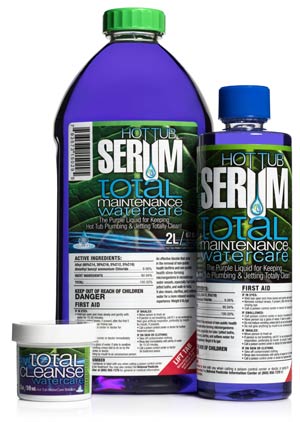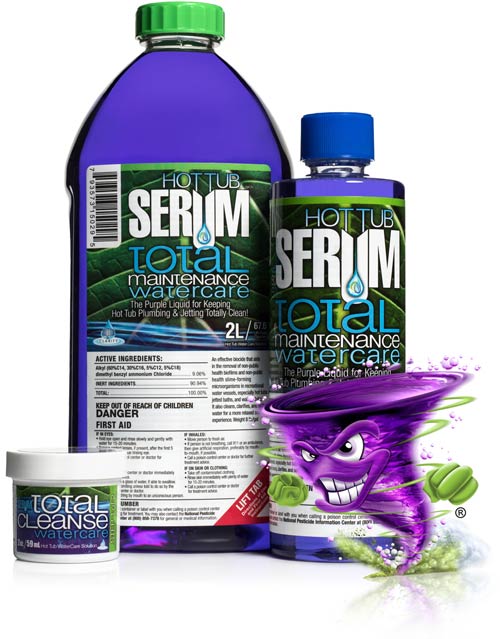If you have recently shopped for a hot tub or been researching best practices for maintaining your spa, you have certainly heard or seen ozone mentioned. Ozonators are often included or added to spas by your spa manufacturer. However, they are often also incorrectly explained as being sanitizers in your spa. This month lets discuss spa “ozone”.
What is Ozone?
Ozone is an unstable molecular form of oxygen.
The word “oxygen” refers to both the elemental form of oxygen, that is the atom, and the most common molecular form of oxygen – that is the combination of two oxygen atoms notated as O2. O2 is a gas and represents just under 21% of our atmosphere. Oxygen is also highly reactive – it likes to combine with a great many other elements. Two common combinations are water (hydrogen & oxygen, or H2O) and rust (iron and oxygen, or Fe2O3). This reactive process is called “oxidation”.
Ozone is O3, or three oxygen atoms and like oxygen, ozone is a gas. Ozone is highly unstable and for this reason it is “oxygen on steroids” when it comes to oxidizing other materials.
Some Facts About Ozone
- Ozone is so unstable it has a half-life of only 30 minutes at normal temperatures, however in a spa it is closer to 20 minutes. This means that every 20 minutes, ½ of ozone will be broken down to regular oxygen if it is not replaced. In an hour, only 1/8 will remain. After two hours less than 2% will remain.
- Ozone is naturally produced by lightning and ultraviolet light in the upper atmosphere.
- Not only will ozone oxidize a vast assortment of chemicals, it will also kill bacteria, viruses, algae, fungus, molds, and other pathogens almost immediately because it is so reactive. In fact, ozone is 50x more effective at killing bacteria than chlorine.
- Because ozone both kills dangerous pathogens AND breaks down so quickly, it is commonly used to disinfect drinking water. However, by the time municipal water arrives at your home, any ozone is long gone.
- As you would likely guess, ozone is harmful to your lungs. This and the rapid breakdown of ozone are key facts to know when discussing the purpose of ozone in your hot tub.
Ozone In Your Hot Tub
As noted above, ozone is a gas. It is produced by a small device called an ozonator in your hot tub. In order for ozone to be effective it must be dissolved in the spa water. The small champagne like bubbles you often see rising in your spa water when you are not using it are a combination of regular air and some ozone. However, that ozone is just escaping – it was not dissolved in your spa water.
Though all too often described as a sanitizer by some hot tub sales folks, ozone is not a sanitizer in spas. At the concentrations used to disinfect drinking water, ozone in the air above the spa water would damage your lungs. In fact, the ozonator in your hot tub is only working some of the time and ALWAYS turned off immediately when you turn on a pump. The spa manufacturer does not want to be adding ozone to the air above your spa when you are around.
Though ozone is not a secondary sanitizer in your spa, it is very helpful to have a secondary, back-up sanitizer. This is one of several purposes of our Hot Tub Serum Total Maintenance and Swim Spas Serum products. Both enhance the pathogen killing effect of your primary sanitizer and step in to continue killing these pathogens when your primary sanitizer level is too low, or the primary sanitizer becomes ineffective.
The True Purpose of Spa Ozonators
So, if ozone is not used as a sanitizer in spas, what is its purpose? It goes back to the highly reactive nature of ozone. Ozone’s purpose is to remove the biologic waste materials in your spa by oxidizing them. It helps remove the “food source” for dangerous pathogens in your spa water. In this sense it starves these dangerous pathogens, however at the concentrations found in your spa, ozone is not killing them. Note however that all manner of pathogens are being added to your spa water on a regular basis.
Three Oxidation Methods Are Used In Your Spa
It is important to note that ozonators are beneficial in spas, but they are not the only method of oxidizing waste materials in your spa. The safe concentration of ozone is just too low to accomplish this. Two other oxidation processes are also used in your spa.
First, the primary reason chlorine and bromine are the most common sanitizers in spas is that they also oxidize waste materials. Hence, they accomplish two functions: both sanitizing spa water AND oxidizing waste materials in the water.
Second, nonchlorine-based shock (potassium monopersulfate) is also used to remove these waste materials, again by oxidation.
You might wonder why three methods of oxidation are commonly used in spas. It’s because unlike a pool you have much less water in a spa, typically 350 – 500 gallons, yet you have a similar # of people in your spa. The result is the sanitation and oxidation demand in your spa is very high. Using all three oxidation methods helps ensure your pristine spa water. This very high sanitation demand in your hot tub is also the reason using Hot Tub Serum Total Maintenance and Swim Spa Serum are so helpful to ensure your enjoyment of your spa.
Types of Ozonators
Just as mother nature produces ozone via two methods, ozonators come in two types. Some ozonators use ultra violet light to produce ozone. However, the far more common are “Corona Discharge” ozonators and use a spark (a really small lightning bolt) to produce ozone. Some creative marketing folks now call these “Plasma Discharge” ozonators.
Both types of ozonators tend to “die” rather quickly. The bulbs in ultraviolet ozonators often need to be replaced every year and even corona discharge units usually have to be replaced every two – three years.
Thanks for reading,
Tony Turbo






